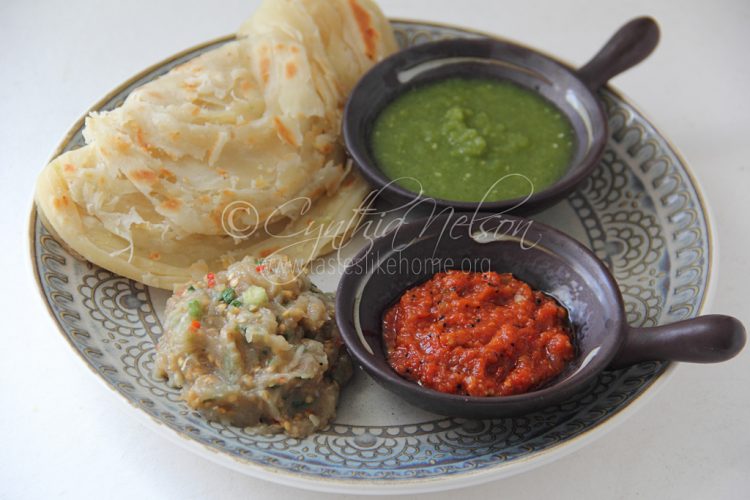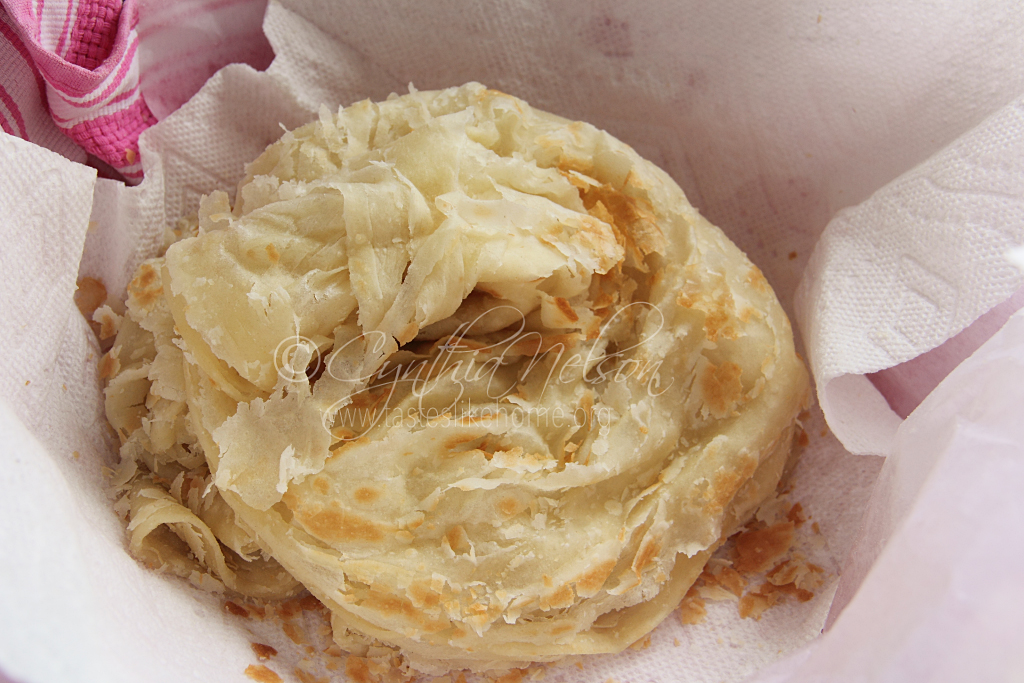
By the time I left Guyana in the late 90s, I knew how to make roti, but being away from Guyana, and the lack of ready access to roti (without having to make it myself), is when I began to truly appreciate the art and skill that goes into making Paratha/oil roti. It requires intuitiveness when kneading the dough. The dough should be soft and this is best determined when kneading by hand; and the dough should not be overworked because it would affect the texture of the roti when cooked. To overwork the dough would be to develop too much gluten causing the cooked roti to be chewy and stretchy, instead of light, leafy, and flaky.

There are certain things that you can only learn and master by practice; doing it repeatedly, working to improve each time. Roti-making is one such thing. It is about using your senses too. You definitely cannot learn it from a book or even through loop-watching videos on YouTube. Regardless of how much time you spend watching, you still need to get into the kitchen, gather some flour and water, and start the process, even if you work along with the video streaming.
I learnt to make roti by watching my late cousin Shantie. Remember I said that my aunt made roti daily for dinner? Her daughter, Shantie, was an expert at making roti and float bakes. Like clockwork, each afternoon at a certain time, the process would start – ingredients gathered and workstation set up. The process, from start to finish, and every stage in between, would culminate with a bowl full of hot, soft, fluffy roti(s) wrapped in a large, cloth kitchen towel taken to the table for the evening meal. Over the years, Shantie would give me various tasks like “measuring” the flour (eyeballing) to “cutting” the dough (pulling balls of dough), to oiling the dough. It would take time for me to graduate to the task of rolling the dough. It had to be round! Let’s be clear, she was the one making the roti, I was only being allowed to assist with the tasks that she felt would not comprise the perfection of her roti(s) (LOL).
I never got to add the baking powder to the flour. It was one of those things that Shantie wanted to do herself. She measured it by looking at the flour. At times she would use a spoon and on other occasions she’d tip the baking powder directly from the packet or tin into the palm of her hand. It would take years, after many trials and errors, for me to figure out how much baking powder to add to the flour to ensure that the cooked dough had the right texture. After much testing, I worked out that for the “perfect” roti texture for our family, it is ¼ teaspoon baking powder to every cup of flour (white, all purpose). I said for our family because roti is a food that is made special by each household that makes it.
Another step in the roti-making process that I got to do on a couple of occasions was the actual cooking of the roti. With the tawah on, Shanti set the flame of the gas stove not by a number on the burner or high, medium or low, but by looking at the spread of the flames beneath the pan. This would ensure consistent cooking heat and time for the roti. She cooked the roti so that it was lightly toasted with brown spots that flaked, flew and scattered around the bowl and counter when clapped immediately after coming off the tawah. On the occasions I got to cook the roti, Shantie watched carefully to make sure that I did not let the roti stay on any side for long and get too brown. It was a balancing act. You wanted toasted flecks, not complete browning of the roti as that affects it when clapped and ultimately the texture because it may dry out somewhat.
You know, even as I write this column, I am noting how much know-how goes into making roti. It adds another layer of appreciation of the skill at making this much-loved food.
Sidenote: the reason I was only allowed to cook the roti sometimes and only a couple at a time was because I needed to get used to the sting of the heat of the roti directly from the hot tawah.
Making Paratha roti is an exercise in patience. Don’t attempt it if you are in a hurry. Apart from the quality of the dough, the secret lies in the lapsed times when you have to leave it alone (after kneading) and secondly, after oiling the dough (laminating with ghee, softened butter or oil depending on your preference).
The appreciation and skill of making certain foods do not only lie with roti, there are many other dishes within our cuisine that one can learn only by doing and practicing. For example, the cooking of rice for Fried Rice, the art of making curry, the know-how of making Cook-up Rice and the ability to make bread among other things.
While we live in an age of convenience, it is still very important that we do not de-skill ourselves. Knowing how to do things will never go out of style. When was the last time you cracked a coconut, broke down a whole chicken, peeled katahar or gutted fish? I was surprised the other day when a 30-something-year-old woman said to me that she has no idea how to peel or cut a mango. She explained that whenever she’s had mangoes, they are already peeled and cut up.
Have a great weekend everyone!
Cynthia






